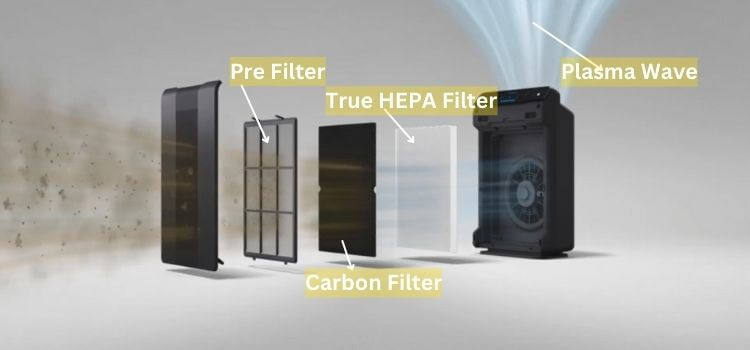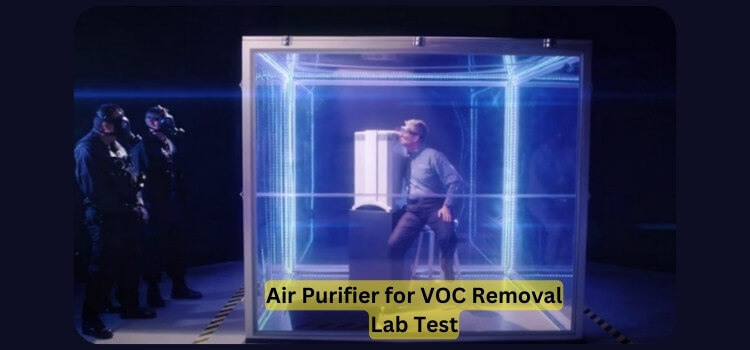When it comes to maintaining a healthy indoor environment, the quality of the air we breathe plays a crucial role. Volatile Organic Compounds (VOCs) are one of the major sources of indoor air pollution, and their presence can lead to various health issues. Fortunately, there are air purifiers specifically designed to tackle VOCs and improve the air quality in our homes. In this article, we will explore the best air purifiers for VOC removal, highlighting their pros and cons to help you make an informed decision.
What are VOCs?
Before diving into the world of air purifiers, let’s understand what VOCs are. VOCs are organic chemicals that easily vaporize at room temperature, releasing harmful gasses into the air. They are commonly found in household products like paints, cleaning supplies, carpets, and furniture. Prolonged exposure to VOCs can result in respiratory problems, headaches, and even long-term health complications.
The Importance of Removing VOCs
Removing VOCs from our indoor environment is essential for maintaining good health. Air purifiers with specialized filters can effectively capture and neutralize these harmful compounds, ensuring cleane
r and healthier air to breathe. By investing in a high-quality air purifier for VOC removal, you can significantly reduce the risks associated with long-term exposure to these hazardous substances.Factors to Consider When Choosing an Air Purifier for VOC Removal
When selecting an air purifier specifically designed for VOC removal, there are several important factors to consider. By keeping these factors in mind, you can make an informed decision and choose the best air purifier for your needs.
Activated Carbon Filters
Search for air purifiers that are equipped with advanced activated carbon filtration systems. These filters are specifically designed to adsorb and eliminate VOCs, trapping them within the filter and preventing them from recirculating back into the air.
CADR (Clean Air Delivery Rate)
The CADR indicates the effectiveness of an air purifier in removing specific pollutants, including VOCs. When selecting an air purifier for VOC removal, check its CADR rating for VOCs. A higher CADR rating indicates that the air purifier can remove VOCs more efficiently.
Coverage Area
Factor in the dimensions of the indoor area where you plan to utilize the air purifier. Air purifiers are designed to work within specific room sizes, so it’s important to choose one that can effectively clean the air in your space. Refer to the manufacturer’s guidelines or specifications to ensure that the air purifier you select is suitable for the size of your room.
Additional Filtration Layers
Look for air purifiers that incorporate multiple filtration layers, such as HEPA filters. These filters can capture not only VOCs but also other airborne pollutants like dust, allergens, and pet dander.
Noise Level
Noise level is another important consideration, especially if you plan to use the air purifier in a bedroom or office. Some air purifiers can produce noticeable noise, which may be disruptive to your sleep or work environment. Look for air purifiers that have a low noise level or offer a quiet mode, ensuring that they operate silently or with minimal noise.
Energy Efficiency
Energy efficiency is not only environmentally friendly but also cost-effective in the long run. Consider an air purifier that is energy-efficient, meaning it consumes less power while still effectively removing VOCs. Look for energy-saving certifications or labels such as ENERGY STAR to ensure that your chosen air purifier is efficient and won’t lead to significant increases in your electricity bill.
User-Friendly Features
Consider the ease of use and additional features provided by the air purifier. Look for features such as adjustable fan speeds, timer settings, and filter replacement indicators for a convenient and hassle-free experience.

Additional Features to Look For
Apart from the essential factors mentioned above, there are additional features that can enhance the performance and convenience of your air purifier.
Smart Technology
Some air purifiers come with smart technology features, allowing you to control and monitor the device remotely through a smartphone app. With these smart features, you can adjust settings, check air quality levels, and receive notifications about filter replacement or maintenance requirements. Smart air purifiers provide greater convenience and flexibility in managing your indoor air quality.
Air Quality Sensors
Air purifiers equipped with air quality sensors can automatically detect and adjust the purification level based on the detected pollutants in the air. This feature ensures that the air purifier operates efficiently and effectively targets VOCs when needed, providing you with cleaner and healthier air.
Timer and Auto Mode
Having a timer function allows you to schedule when the air purifier should operate. This feature is particularly useful if you want the purifier to run during specific hours, such as when you’re away or sleeping. Additionally, an auto mode can automatically adjust the fan speed and purification settings based on the air quality detected, optimizing performance while minimizing energy consumption.
Considerations for Allergies and Asthma
If you or your family members have allergies or asthma, it’s important to choose an air purifier that addresses these specific needs. Look for air purifiers that have a HEPA filter in addition to the activated carbon filter. HEPA filters can capture microscopic allergens such as pollen, pet dander, and dust mites, providing relief for allergy sufferers. Ensure that the air purifier is certified as “True HEPA” to guarantee its effectiveness in removing allergens from the air.

Pros and Cons of Air Purifiers for VOC Removal
Using air purifiers for VOC removal offers numerous benefits, but it’s important to consider the drawbacks as well. Here are some pros and cons to keep in mind:
Pros:
- Efficient removal of VOCs, providing cleaner and healthier air.
- Reduction in respiratory issues, headaches, and other health problems caused by VOC exposure.
- Additional purification of other airborne pollutants, improving overall indoor air quality.
- Customizable features and settings for enhanced user experience.
- Long-term cost savings by avoiding potential health complications related to VOC exposure.
Cons:
- Initial investment cost for purchasing an air purifier.
- Ongoing maintenance expenses for filter replacements.
- Some air purifiers may produce noise, affecting peaceful environments like bedrooms.
- Energy consumption, although minimized with energy-efficient models.
Conclusion
Investing in the best air purifier for VOC removal is a proactive step towards improving indoor air quality and safeguarding your health. By considering factors such as activated carbon filters, CADR, coverage area, and additional filtration layers, you can find an air purifier that meets your specific needs. Remember to weigh the pros and cons of each option and choose one that aligns with your preferences and budget. With the right air purifier, you can effectively remove VOCs from your home and breathe cleaner, fresher air.
FAQs
Q: Can an air purifier completely eliminate VOCs?
A: Air purifiers can significantly reduce VOC levels but may not eliminate them entirely. It’s important to minimize the use of VOC-emitting products and ensure proper ventilation in conjunction with using an air purifier.
Q: How often should I replace the filters in an air purifier?
A: Filter replacement frequency varies depending on the model and usage. Refer to the manufacturer’s instructions for specific guidelines, but in general, filters should be replaced every 6 to 12 months.
Q: Are there any natural ways to reduce VOCs in my home?
A: Yes, you can reduce VOC levels naturally by increasing ventilation, using houseplants known for air purification, and opting for low-VOC or VOC-free products.
Q: Can air purifiers remove other indoor air pollutants besides VOCs?
A: Yes, air purifiers with multiple filtration layers, such as HEPA filters, can effectively capture and remove various pollutants, including dust, allergens, and pet dander.
Q: Are there any health risks associated with VOC exposure?
A: Prolonged exposure to VOCs can lead to respiratory problems, eye irritation, headaches, and even long-term health complications. It’s crucial to minimize VOC exposure and ensure clean indoor air quality to protect your health and well-being.
As an Amazon Associate, I earn from qualifying purchases
